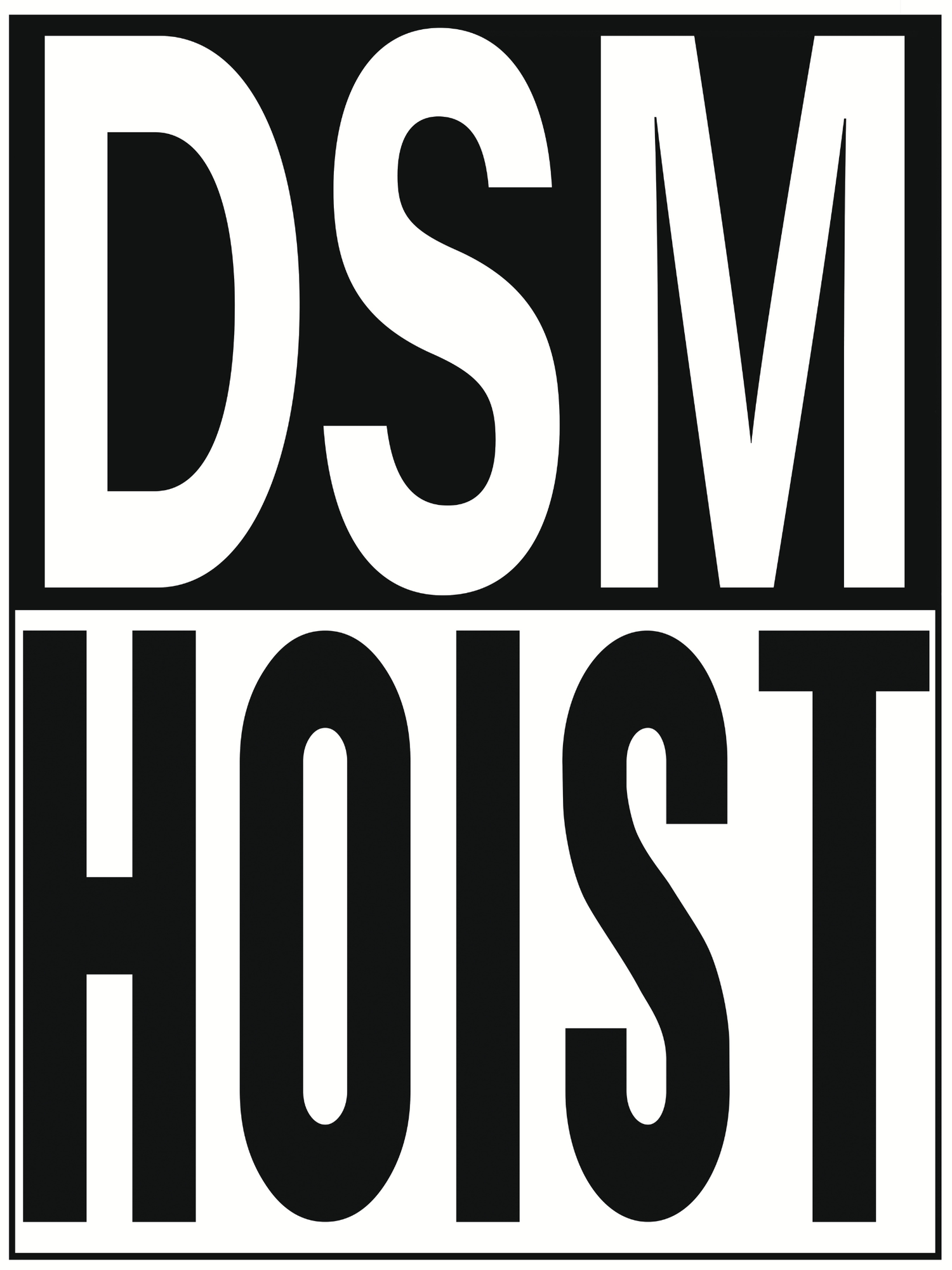God Bless America
Hooked ~
Harrington Hoists
We are
If you've been thinking bout taking the kids fishing...
Consider this your cue. Get out and enjoy those kids and grands. remember, it’s not just adding to your memories, you’re helping create theirs too.
Have a fantastic weekend, my friend!
Central Iowa's DSM HOIST
Selecting Best Hoist for the Job
Outdoor Crane
We're here for you
Have a great one!
Be Safe and take some time to chill this weekend.
What extends the life of your hoists?
DSM Hoist’s experienced technicians perform thorough & reliable inspections for your facility. Our office staff will then develop a consolidated report for your staff as an “at a glance” reference as well as scan each individual inspection for your files. Your inspections/reports are also archived into our files here at the shop. We want to help you stay safe, Osha compliant and save you money in the long run..
Capacity Markings ESSENTIAL
One of the leading causes of Hoist accidents is Overloading.
Always know the capacity limit or WLL of the hoist/workstation you are using, which must be marked on the bridge/hoist. The hook will have a manufacturer’s identification and rated load identification that is forged, cast or die stamped on a low-stress area of the hook. On a synthetic sling, the rated load capacity will be found on the identification tag that is affixed to the sling.
Also, know the weight of the materials you are going to lift. If you are not sure, take the time to calculate it. Refer to your Rigging manual for the principles of calculation and the weight tables that show what various materials weigh based on volume.
(It is an OSHA Requirement that there be Capacity Markings on every Bridge and Hoist)
Safety ABOVE ALL -
1932 NYC
Back in 1932, with the Empire State building as a backdrop, two brave men pose for a photo atop the steel beams of the RCA Building. Most of us could not fathom the courage it would take to appear so comfortable so high up in the sky. These workers had nerves of steel & iron stomachs.
Here’s to the iron workers, the construction workers, the manufacturers & to the cranes & hoists that help us build amazing structures.
Performing Functional Test & inspection on Rental Equipment
The Number One Safeguard is Inspection
Each lifting device will have its inspection record on board, Reviewing past inspection and maintenance records provide valuable insights into the crane’s overall health and any recurring issues.
The manufacturer’s operator manual should also be reviewed; it serves as a crucial reference for proper operation, capacity limitations, and inspection procedures. OSHA mandates that a copy of the manual is always present in the crane cab for easy access by the operator.
The process
Visual Inspection:
Check for any visible damages, leaks, or loose components.
Control Check:
Test all crane controls: hoist, swing, trolley, boom extension, and emergency stop.
Load Test:
Conduct a controlled load test to verify the crane's lifting capacity.
Safety Features:
Test all safety features including limit switches, overload protection, and emergency braking system.
Operational Test:
Operate the crane through a full range of motions to ensure smooth operation.
Upon successful completion of the functional test and ensuring that the crane meets all safety requirements, it can be deemed ready for use on the designated job site.
Notify the Rental Firm if any issues or concerns are identified during the test so that appropriate actions can be taken.
Don’t take for granted that someone before you has already done a proper inspection. We absolutely need to think in these terms “my safety is in my own hands.”
Calling All Hoist Owners & Operators
Keep your facility safe and prosperous with regular inspections from DSM Hoist.
Call us for a competitive quote today
Let us help you with your lifting dilemma
Just a phone call away from the answers you need - Call us!
TGIF
You're never Alone
When you are facing heavy lifting challenges that seem insurmountable, consider bringing DSM Hoist on board. We collaborate with many facilities who deal with unconventional lifting situations. We are happy to share our experience and knowledge with you honestly as we consider every facet of the project, from cost effectiveness to Safety. We are on your side always, with a willing & helping hand, because your success directly determines ours. Long live your manufacturing company!
Call us at 1-515-981-5600




















